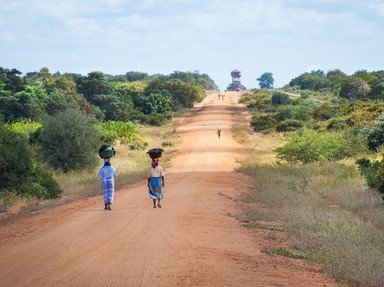Quiz Answer Key and Fun Facts
1. In 1498, which country colonised what is now Mozambique?
2. The Soviet Union and China have been known for decades to support communist revolutions in other countries but which other not so obvious country played a major role in Mozambique's push for independence in the 1970s by supporting the Mozambique Liberation Front?
3. The Mozambique Drill for pistols is informally known as which of the following?
4. The flag of Mozambique contains a feature that you rarely see on a national flag. What is this unusual feature?
5. The Zambezi River is the fourth longest in Africa, is the home of Victoria Falls, and empties into the Indian Ocean on the coast of Mozambique. Which noted European explorer was the first to travel its length and buried his wife on its banks?
6. Which country, a former French colony, is an archipelago at the northern end of the Mozambique Channel?
7. Black Panther, Black Pearl, and O Rei are nicknames of which football (soccer) player, born in Lourenco Marques, Portuguese Mozambique?
8. Mozambique is a style of music and dance that originated in which Caribbean country in the 1960s?
9. The song "Mozambique" appears on which yearning 1976 Bob Dylan album, the artiste's seventeenth studio release?
10. Xima is a sort of porridge that is a staple of Mozambican cuisine. Listen carefully and tell me what the main ingredient in this dish is.
Source: Author
purelyqing
This quiz was reviewed by FunTrivia editor
agony before going online.
Any errors found in FunTrivia content are routinely corrected through our feedback system.
